Spain: the Way of St. James
Our path is not intended to be a pilgrimage, after all it should be traveled on foot, but a journey made in the name of discovery and knowledge. The tour will retrace the stages of the “Camino de Santiago” made, according to legend, by Charlemagne, passing through places rich in spirituality and mystery, from Pamplona we will reach the city of Santiago de Compostela left which we will proceed to the discovery of green Spain , little known and full of charm. It is the mountain overlooking the sea. The Atlantic Ocean and the Cantabrian Sea form small spectacular overhangs where ports, fine sandy beaches and hidden coves overlooked by seagulls find refuge.
The Tour in brief
Duration: 14 days / 13 nights.
Mileage: about 2.600.
Arrival/Departure: Torino / Andorra.
Level: medium.
Min/Max partecipants: 12/30.
Hotel: 4 and typical.
Hightlights: Pamplona, Burgos, Leon, Santiago de Compostela, La Coruña, Oviedo, Bilbao, Saragozza, Andorra.
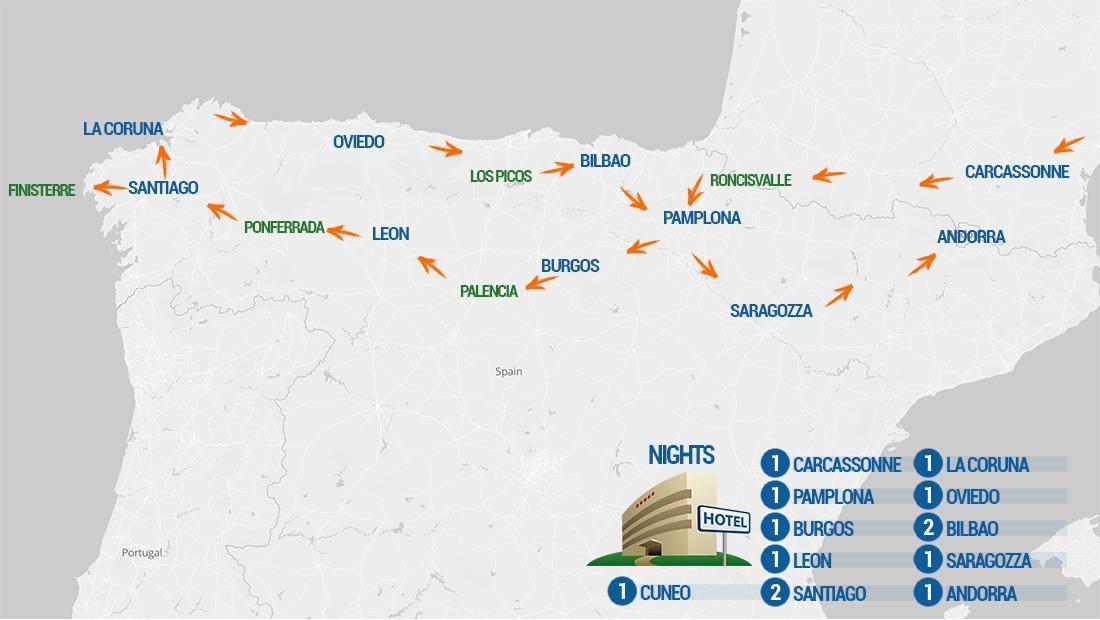
Itinerary
Day 1 - Cuneo
Arrival at the hotel in the afternoon, presentation of the trip and dinner.
Day 2 - Cuneo / Carcassonne, km 600
Today we will reach Carcassone in France passing through the Camargue park.
Day 3 - Carcassonne / Pamplona, 481 km
In the morning departure for the Pyrenees to pass the famous Roncisvalles pass, rich in legends and myths, from where our journey in search of the “Camino de Santiago” will begin. We will arrive in Pamplona, capital of the ancient Kingdom of Navarre, is located in the central area of the region, in the heart of the homonymous basin surrounded by mountains. Founded in the year 75 BC by the Roman general Pompeo on an ancient Basque village called Iruña, over the centuries it has been marked by different cultures and has been a fundamental stop on the Camino de Santiago.
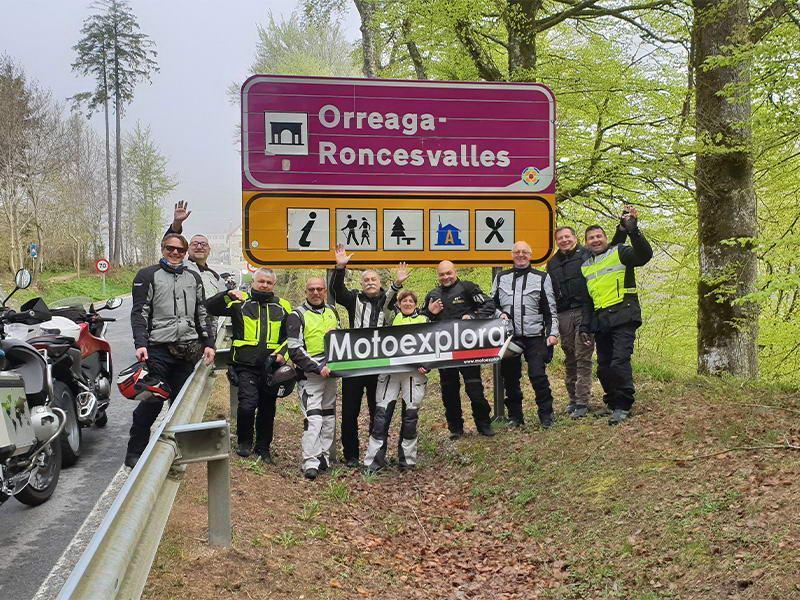
Day 4 - Pamplona / Burgos, 210 km
During the journey, small villages full of charm and spiritual meaning will alternate one after the other. From Estella Lizzara, nicknamed the Toledo of the north, we will go to Torres del Rio with the church that takes up the octagonal plan of the Holy Sepulcher, to pass through Viana, where the route leaves Navarre to enter Castile. In the late afternoon, arrival in Burgos, city of Cid and custodian of the national language, Spanish or Castellano.
Day 5 - Burgos / Leon, km 235
Our “path” winds through roads, rivers and wonderful fields with reddish-colored soils in the countryside of Palencia, a city that experienced a singular episode in 1388: since the men were engaged in fighting elsewhere, the city was defended by women from the assault of the troops led by John, Grand Duke of Lancaster. The day will end with the arrival in Leon, capital of the homonymous province and part of the autonomous community of Castile. The city was founded in the first century BC. Roman Legio VI and preserves a wonderful medieval urban layout.
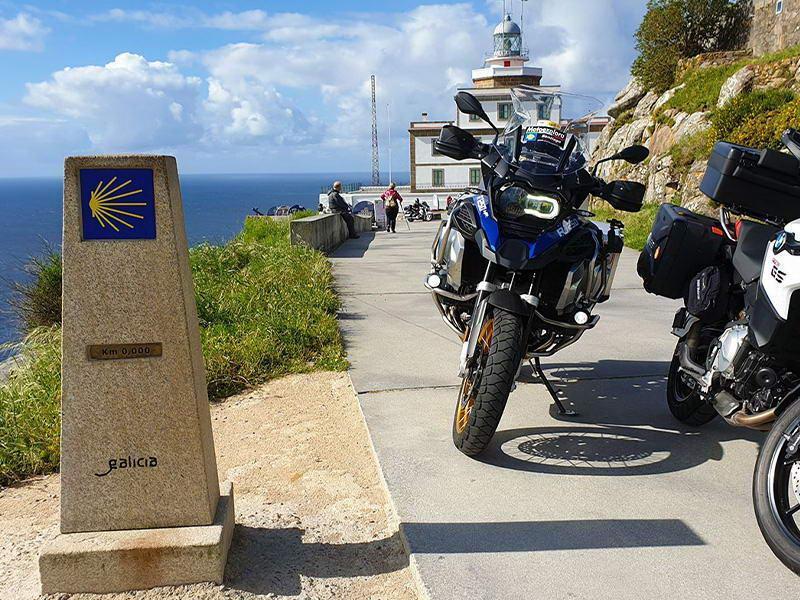
Day 6 - Leon / Santiago de Compostela, 340 km
Last stop towards Santiago de Compostela, passing through Ponferrada and its Templar castle, Galicia through O Cebreiro, where pallozas, stone houses with thatched roofs are still visible. In the church of the city, and in all the symbolic places, the Cebreiro has his miracle, and here too it is up to everyone’s faith to measure its historicity: the body and blood of Christ that materialized from the wine and bread broken by a priest skeptical about the mystery of the Eucharist, they are still preserved today in two crystal ampoules, donated by the royal family in 1486: an episode that closely resembles the miracle of Corpus Domini, which occurred in Bolsena in 1263, which gave rise to the homonymous festival . In the evening, arrival in Santiago De Compostela.
Day 7 - Santiago de Compostela
We cannot fail to stop at least one day in Santiago to experience its double soul: on the one hand, a spiritual city and destination of one of the most important pilgrimages in the world, on the other a young and easy-going city, full of night clubs and recreational spaces.
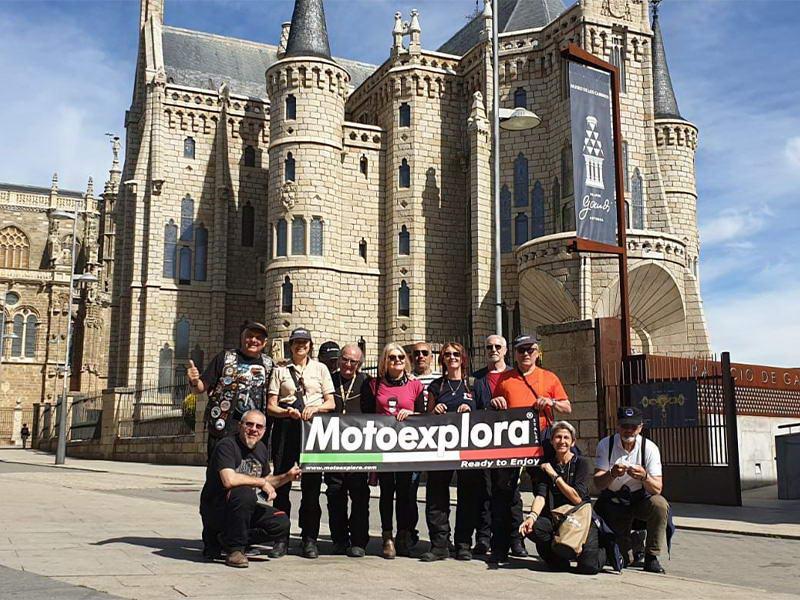
Day 8 - Santiago de Compostela / La Coruna, 238 km
Our journey to discover green Spain begins. The first stop will be Finisterre, whose name derives from the Latin Finis terrae (“end of the earth”) as Cape Fisterra is one of the two westernmost points of Spain (the other is Cape Touriñan near Muxia) often visited by pilgrims who they complete the Camino de Santiago. Tradition has it that pilgrims here take a bath in the ocean as a sign of purification, and collect one of the shells (a symbol that marks the path starting from Roncesvalles) found on a beach as proof of the pilgrimage. We will continue to Camarinas admiring the famous “Costas da Morte” to arrive in La Coruna in the afternoon.
Day 9 - La Coruna / Oviedo, km 294
Destination Oviedo, in Asturias, with a unique geography, with rivers that flow into the sea through large overhangs and beautiful river valleys. We will travel along the national road 632 passing through the port of Cudiero to be able to taste seafood and cider.
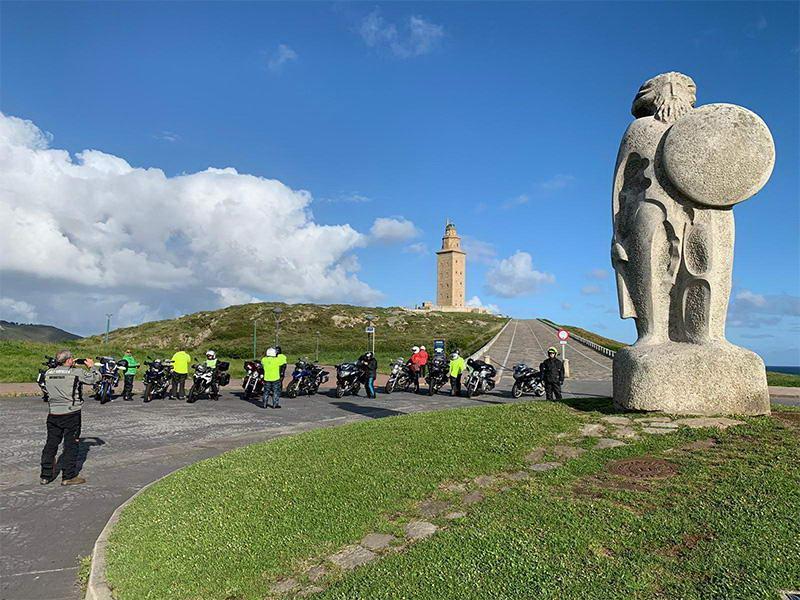
Day 10 - Oviedo / Bilbao km 298
Today we will visit this splendid region of Cantabria, characterized by its coasts and by marvelous cities such as Santander, through which we will make our morning journey: today 110 kilometers of magnificent roads await us from west to east, through a coastal strip made of precipices and small coves of golden sand. In the evening, arrival in Bilbao, the capital of the province of Biscay.
Day 11 - Bilbao
Bilbao, the largest city in the Basque Country and practically their capital, is full of life and since 1997 has gained further popularity due to the inauguration of the famous Guggenheim Museum. Since its opening, the museum has turned into a very important tourist attraction for the city, attracting visitors from many countries around the world. Today the Guggenheim Museum has undoubtedly become one of the main symbols of this splendid and ancient city.
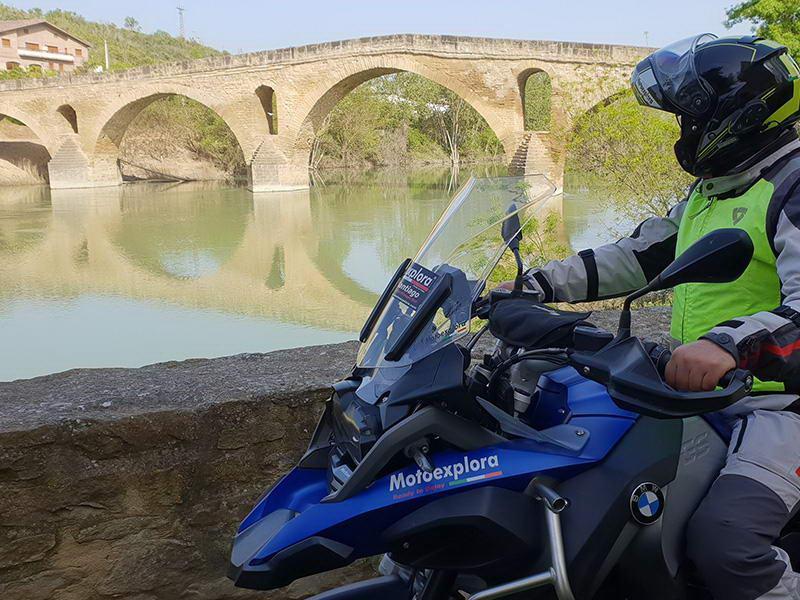
Day 12 - Bilbao / Zaragoza, Km 305
Transfer stage, to reach in about 4 hours Zaragoza defined The Most Noble, Loyal, Heroic, Immortal since it fought strenuously to the Napoleonic troops during the Spanish War of Independence. That was an important period in a long history that began in 24 BC when Caesar Augustus founded the. Thus begins the two-thousand-year history of this city that has seen the presence of all the civilizations that have lived in the Iberian Peninsula. The French Caesar Augusta took the name of Saraqosta during the Arab domination until it became Zaragozza, the current name.
Day 13 - Zaragoza / Andorra, km 300
Last day of our trip to Spain, before reaching Andorra, a small principality in the Pyrenees. overnight at Hotel.
Day 14 - Return to Italy
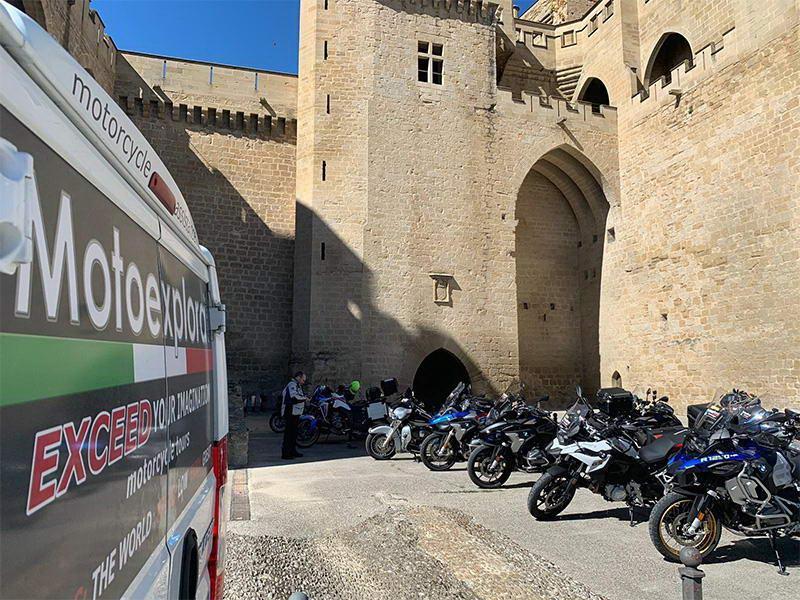
Dates and Prices
Upcoming departures
Included Services
Insurance policy “Motoexplora senza pensieri” with:
Trip cancellation;
Theft or damage to luggage;
Medical assistance;
13 breakfasts;
4 dinners;
13 overnight stays in a double or single room in excellent facilities;
Tour leader in motorbike;
Support vehicle (with a minimum of 20 participants);
Souvenir & gadgets by Motoexplora;
NOT Included Services
Fuel;
Motorway tolls;
Tips;
Drinks with meals;
Entrance tickets and guided visits to museums or archaeological sites;
Registration fee: € 50.00 per person;
All extras of a personal nature and anything not expressly indicated in the “included services” item;
Documents
Do you want to receive more information or participate in the trip? Fill out the form below, or contact us by phone or on WhatsApp.
N.B. The program may be subject to changes at any time and without notice, due to force majeure or its improvement.




